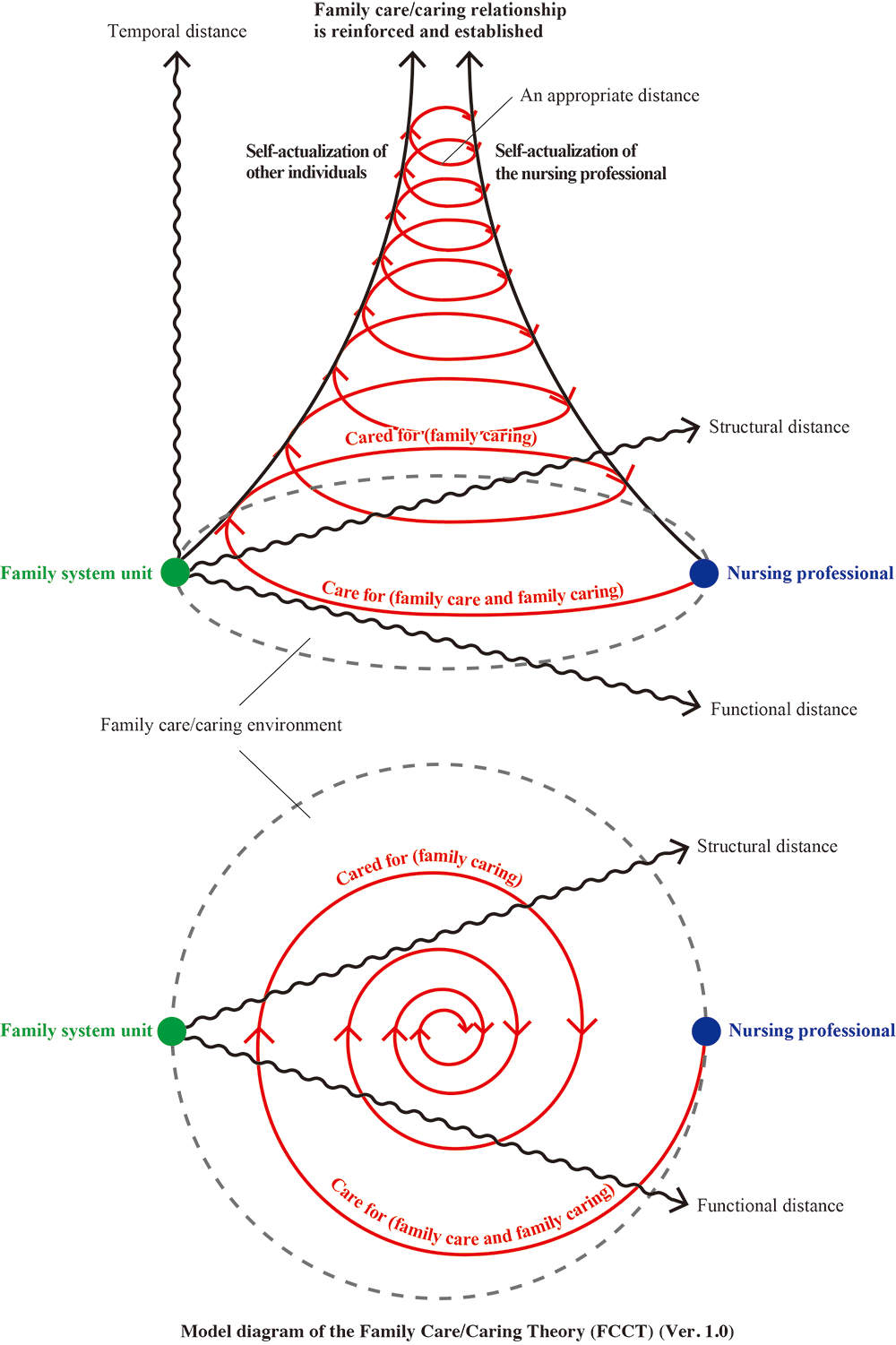- Adjust font size
- Medium text size
- Large text size

Family Care/Caring Theory (FCCT)
The Family Care/Caring Theory (FCCT) proposed by Hohashi (2012) is a middle-range family nursing theory with a focus on the process of establishing family caring relationships between the family system unit and the nursing professional. The theory is graphically expressed as the Family Care/Caring Model (FCCM), which can be indicated in the form of a three-dimensional structure. It has been proved in clinical use, and continues to undergo creative improvements and corrections. The newest version is Version 1.1 (effective Feb. 2016). In the FCCT, family care refers to "the engaging of practice toward families jointly by the nursing professional and people in other job categories." Moreover, family caring is seen as the phenomena of family care, which refers to "transactions performed between the family system unit and the nursing professional, or the circular process in which such transactions take place."
Within the family environment in which the family care/caring environment takes place, the nursing professional provides "care" to the family system unit, and the nursing professional "receives care" from the family system unit in return, with these mutual transactions taking place in a circular form. Looking at the two-dimensional plane formed by structural distance and functional distance, family caring forms a concentric structure, and through the transactions the structural distance and functional distance between the nursing professional and family system unit are gradually reduced, deepening their ties of mutual trust and maintaining the ties at an appropriate distance. Further, observing the three-dimensional space formed by addition of the temporal distance indicates how family caring assumes a spiral structure, and as transactions are repeated along the temporal axis, the structural distance and functional distance are appropriately maintained, thereby serving to achieve self-actualization by both the family system unit and the nursing professional. Through these processes, the relationship of family care/caring is reinforced and established.
Updated February 14, 2016








